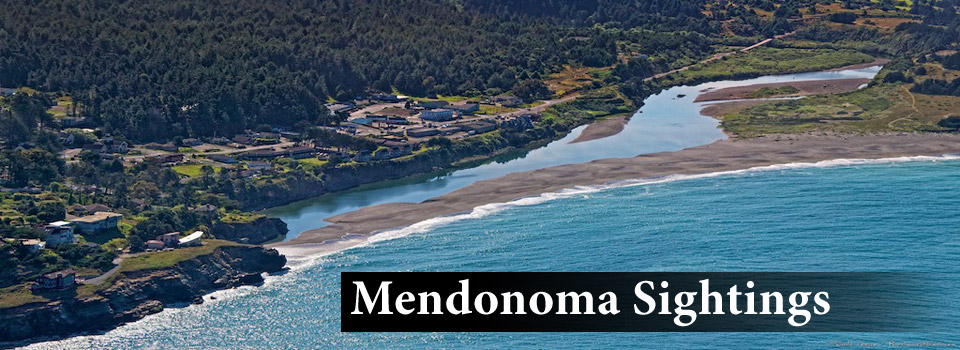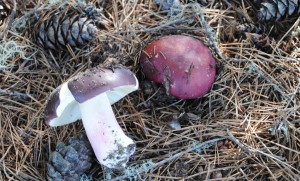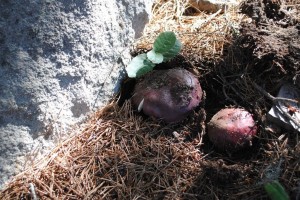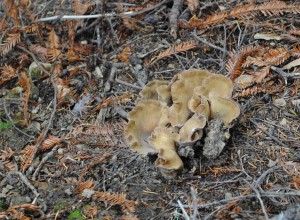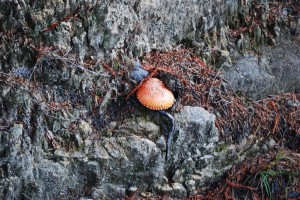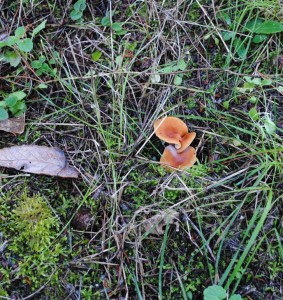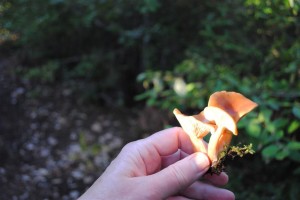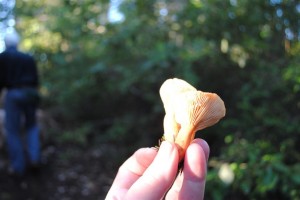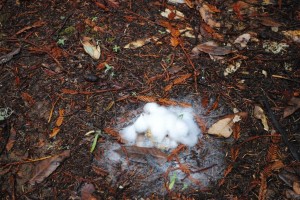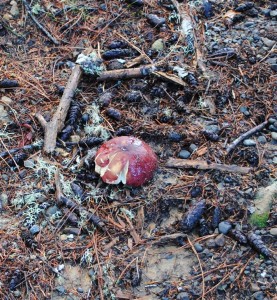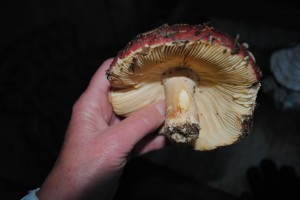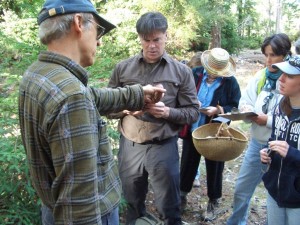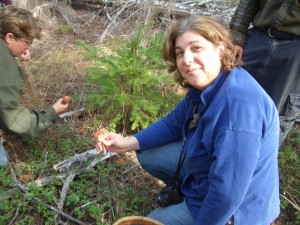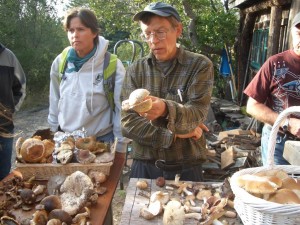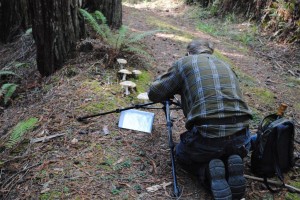A group of Shrimp Russulas, Russula xeramplina, has bloomed under a Shore Pine tree on our property. I finally learned the identification of these edible mushrooms after a mushroom forage with David Arora a month or so ago. First, it is a substantial mushroom, not flimsy. The stem is rosy though you will have to look closely at my photo to see the blush. When you scratch the stem it should turn yellow. To further make sure you have the edible Russula, bite off a small piece of the cap, chew and then spit out. If you taste pepper you have the wrong one.
These two 'shrooms are growing next to a large rock at our home in Anchor Bay.
It's been cold and dry here on the Mendonoma Coast. But these Shrimp Russulas didn't seem to mind! To see several other photos of this mushroom, here's the link: http://www.mendonomasightings.com/2011/11/24/shrimp-russula-has-appeared-on-the-edge-of-our-forest-in-anchor-bay/
